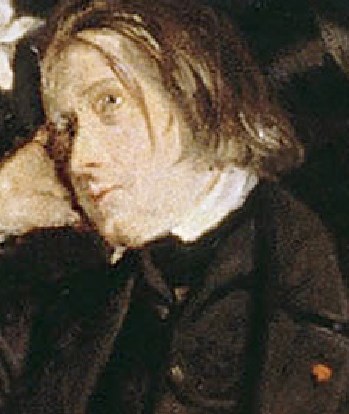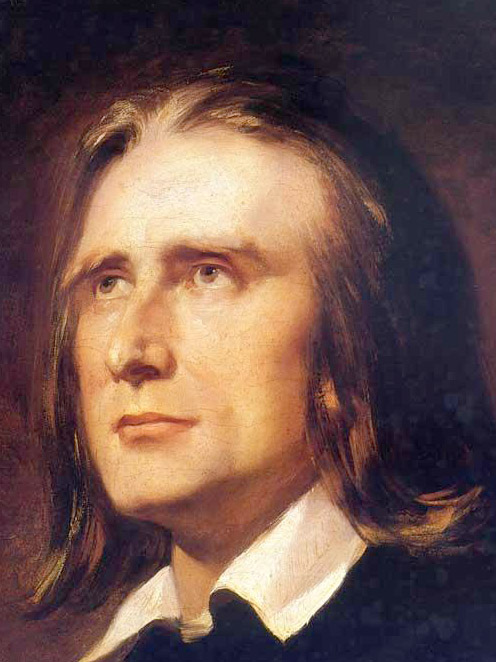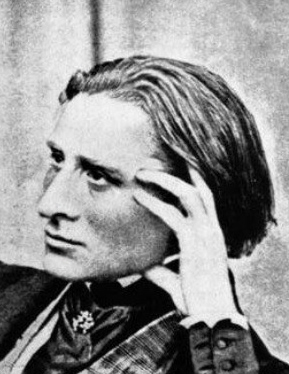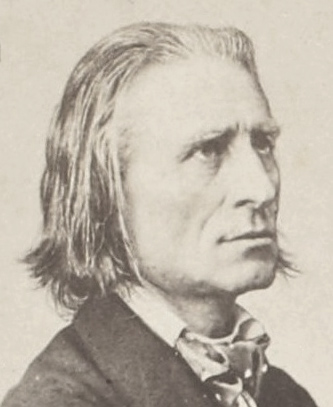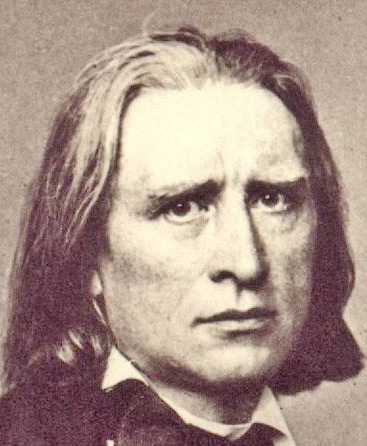Franz Liszt (1811 – 1886), pianist, composer
1st image: Soirée; 2nd: by Kaulbach (1856); 3rd: by Louis Daguerre (1841); 4th: Photo (1856); 5th: photo Hanfstaengel (1858) (Ernst Burger archive). Liszt Arte-TV. (Alternative: Regnault)
The striking resemblance of this person with Franz Liszt was the reason I commenced my investigation of Soirée au Louvre in 2015. Convinced of his presence I focused on the (fifty) unknown persons in the painting. Only years later I came to the conclusion that the only viable candidate for this position is scientist Regnault50a. Liszt was in Paris in October 1853, and met with many of his friends that are depicted here, but the vendredi-soirées had not started yet.
I have kept Liszt's profile in this overview as a tribute. Without him, I would not have initiated my quest to find everyone in the painting. I also maintain him as example of the complexity to identify images from an age when photography was still virtually absent.
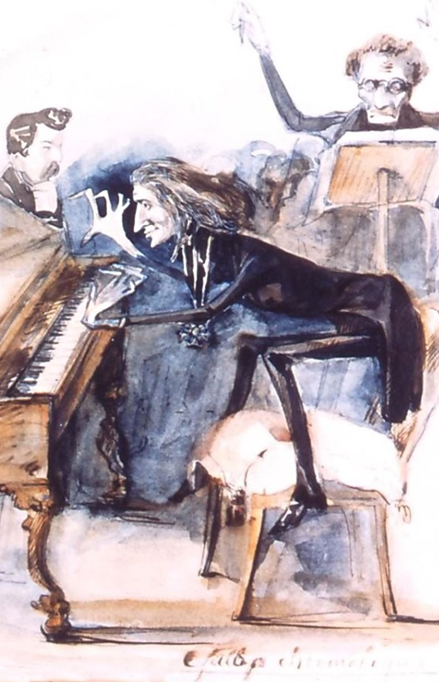
Hungarian piano virtuoso ‘petit’ Liszt moved with his father to Paris and performed with tremendous success. In Paris, he stayed with pianoforte builder Érard, who supported him when his father died in 1827. Overcoming the death of his father and an impossible love-affair with the daughter of a French minister, Caroline de Saint-Cricq, Liszt devoted his time to perfect his playing and composing.
His liaison with (married) countess Marie d’Agoult, and their travels to Switzerland and Italy formed the start for his large volume of compositions.
Up to 1847, Liszt toured Europe and even performed in Istanbul. He was the first who organized solo-concerts.
Tired of his travels with their lack of comfort, and a broken relationship with d’Agoult (with whom he had three children) he settled in Weimar 1848 with (married) princess Carolyne de Sayn-Wittgenstein, composing and conducting music.
Liszt's pianistic rival Thalberg (Liszt dwarfed him as composer) had played at the Louvre in March 1852. For sure, Liszt's presence would be a climax for de Nieuwerkerke's16 events.
After researching Liszt's whereabouts for considerable time, October 1853 posed the only available option.
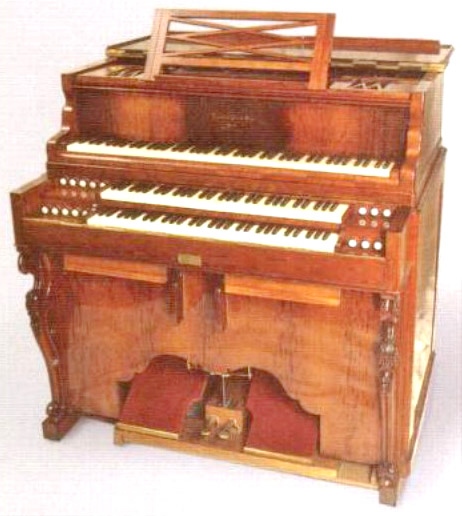
Liszt arrived in Paris on October 10, 1853, with the princess de Sayn-Wittgenstein and his protegé, the young composer Wagner. The journals announced the arrival of the legendary pianist weeks ahead of time.
He had a full agenda for a three-week stay: promote the work of Wagner, approve a new ‘Liszt’ piano-organ by builder Alexander, attending the Opera, holding a dinner for his Parisian friends, promoting his book on Chopin, and most of all to meet (after eight years absence) his three children and his mother.
His first love, Caroline de Saint-Cricq, planned to be in Paris as well.
Liszt met with Meyerbeer76 and Scribe74, but also dined with many good friends including Halévy19, Ingres39, and Scheffer41a. For sure, there could have been an opportunity during his stay in Paris to pose for Biard and attend the Louvre.
Alas, the vendredi-soirées hadn’t started yet. The last event had been on April 18. It was hosted by Viel-Castel43 due to illness of de Nieuwerkerke's mother. The events would not reopen until December, thereby leaving scientist Regnault50a as the only viable candidate.
Liszt had to leave early for Weimar on October 19th. Wagner (who had fallen in love with Liszt’s daughter Cosima) and the Princess stayed. She met with Caroline Dartigaux (née Saint-Cricq) after the 25th.
In 1854, Liszt traveled to Holland and Belgium but, despite press announcements, not to Paris. From Weimar, Liszt moved to Rome where he lived for eight years, his planned marriage with de Sayn-Wittgenstein rejected by the Pope. He also suffered the loss of his son Daniel (1859) and his daughter Blandine (1862). It led Liszt to the point where he decided to become a priest (which never happened) and focused on more religious, introvert, and darker compositions that were not always understood by the public that remembered him from his days as pianist-rock star.
From 1869 onwards Liszt led a ‘vie trifurquee’ (tri-forked life), composing, teaching, and conducting between Rome, Weimar, and Budapest until his death in 1886.
